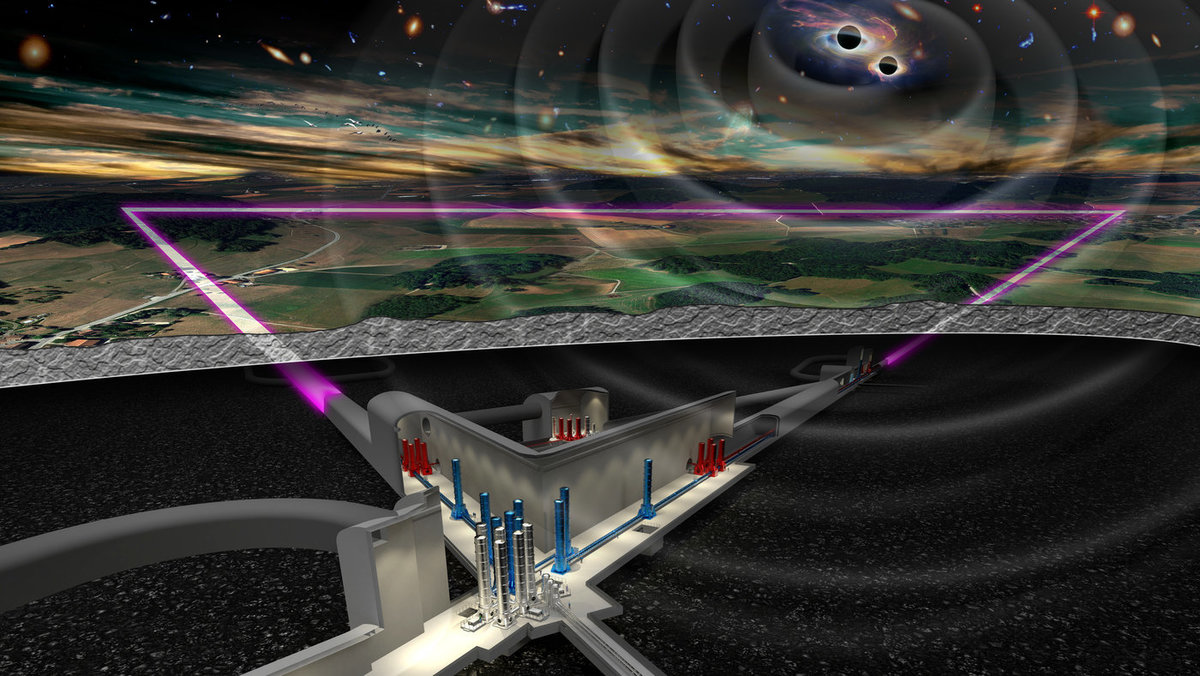CERN is helping build and realise the Einstein Telescope, a massive subterranean gravitational wave detector that is expected to be ten times as sensitive as the detectors so far.
About Einstein Telescope:
- It is an advanced gravitational-wave observatory, currently in the planning stage.
- It builds on the success of current, second-generation laser-interferometric detectors Advanced Virgo and Advanced LIGO, whose breakthrough discoveries of merging black holes (BHs) and neutron stars over the past 5 years have ushered scientists into the new era of gravitational-wave astronomy.
- The Einstein Telescope will achieve a greatly improved sensitivity by increasing the size of the interferometer from the 3km arm length of the Virgo detector to 10km, and by implementing a series of new technologies.
- The expected sensitivity of the Einstein Telescope will be at least a factor of ten times that of Ligo.
- Applications:
- It will make it possible, for the first time, to explore the Universe through gravitational waves along its cosmic history up to the cosmological dark ages, shedding light on open questions of fundamental physics and cosmology.
- It will probe the physics near black-hole horizons (from tests of general relativity to quantum gravity), help understand the nature of dark matter, and the nature of dark energy and possible modifications of general relativity at cosmological scales.
- Its low-frequency sensitivity will allow us to detect intermediate-mass black holes.
What are Gravitational Waves?
- They are ‘ripples’ in space-time caused by some of the most violent and energetic processes in the Universe.
- Albert Einstein predicted the existence of gravitational waves in 1916 in his general theory of relativity.
- Einstein’s mathematics showed that massive accelerating objects (things like neutron stars or black holes orbiting each other) would disrupt space-time in such a way that ‘waves’ of undulating space-time would propagate in all directions away from the source.
- These cosmic ripples would travel at the speed of light, carrying with them information about their origins, as well as clues to the nature of gravity itself.
- The strongest gravitational waves are produced by cataclysmic events such as colliding black holes, supernovae, and colliding neutron stars.




